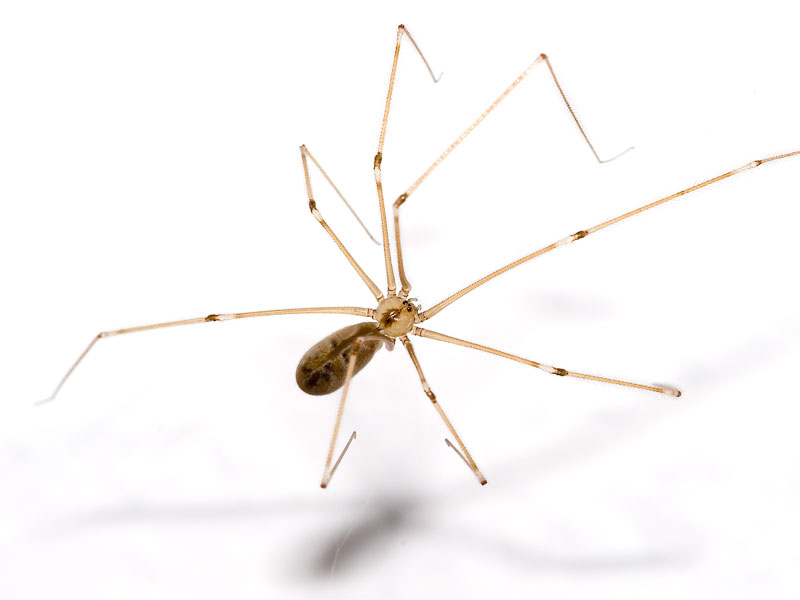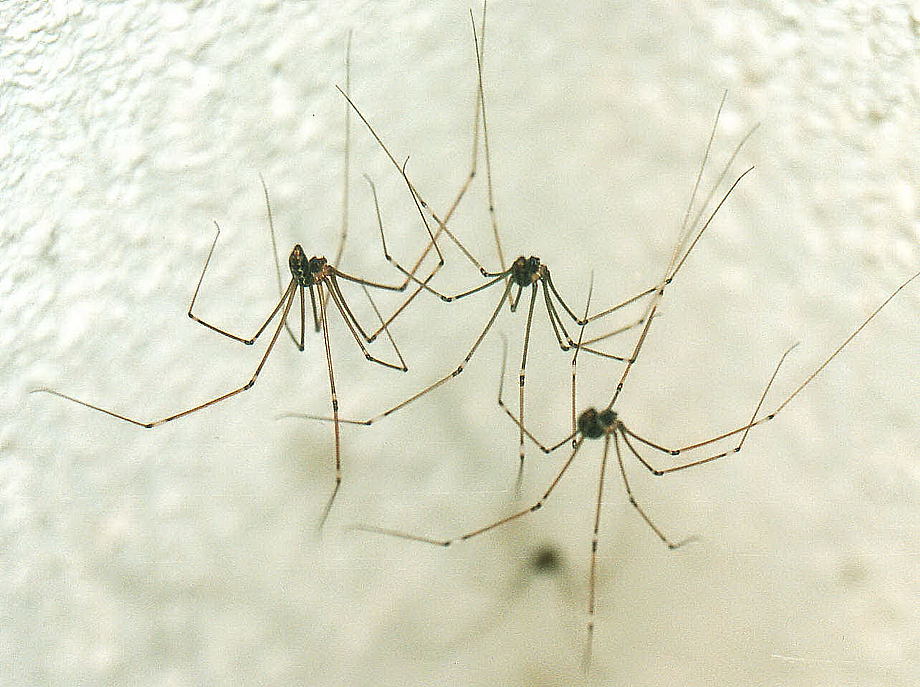

Pholcus phalangioides has a habit of living on the ceilings of rooms, caves, garages or cellars. The length of the spider's legs are on average 5 or 6 times the length of its body. Its common name of "daddy long-legs" should not be confused with a different arachnid group with the same common name, the harvestman (Opiliones).įemales have a body length of about 8 mm while males tend to be slightly smaller.

This is the only spider species described by the Swiss entomologist Johann Kaspar Füssli, who first recorded it in 1775. It is also known as the skull spider, since its cephalothorax is said to resemble a human skull. The Kentucky Critter Files discusses cellar spiders.Pholcus phalangioides, commonly known as daddy long-legs spider or long-bodied cellar spider, is a spider of the family Pholcidae.Learn more about Jo-Anne Sewlal's research on orb-weaving spiders.There are three subfamilies, more than 500 genera and more than 15,000 species of crane fly. There are about 6,500 species of harvestmen. The taxonomy of harvestmen, according to ITIS, is: Taxonomy/classificationĪccording to the Integrated Taxonomic Information System (ITIS), there are more than 80 genera of daddy longlegs spiders and about 1,000 species. He reported nothing more than a very mild burning sensation from the spider's venom that lasted just a few seconds.Īccording to the Australian Museum, the myth may have come about because the daddy longlegs spider can kill the dangerous Australian redback spider, but that is done through its ingenious web-catching technique, not its venom. However, this myth was busted on the Discovery Channel show " Mythbusters." A daddy longlegs spider was coaxed into biting the arm of the show's co-host, Adam Savage. Venom myth bustedĪccording to urban legend, daddy longlegs are the most venomous spiders in the world, but their fangs are too weak to penetrate human skin. Male daddy longlegs typically live for about one year and die after mating. It takes about a year for the baby spiders to develop from egg to adult.

Then, the newly hatched babies crawl onto the mother’s body for a brief stretch of time. It then inserts the pedipalps into the female’s epigynum (external genital opening), and she carries the sperm around with her until she lays her eggs.Īccording to Clemson University, daddy longlegs spiders carry their egg sacs in their jaws at all times - with the exception of eating - until the eggs hatch. According to the Natural History Museum of Los Angeles County, like most spiders, the male squirts sperm onto the web then sucks it up into his pedipalps, a pair of sensory appendages near the mouth. Again, the spider holds onto the underside of its web, and there it “repeatedly bends and straightens its legs like it is doing squats.” Matingĭaddy longlegs spiders can mate throughout the year. “Another behavior that has a similar purpose is called ‘bobbing,’” said Sewlal. This is particularly useful since they have visual predators such as birds, lizards and even other spiders like some species of jumping spiders. This is a defense mechanism and serves to make the spider appear bigger than it really is. She said that some neotropical species engage in an action called “whirling.” She described it as when “the spider holds onto the underside of its web and swings its body in horizontal circles until it looks like a blur to the human eye. Sewlal described two fascinating defense mechanisms of daddy longlegs spiders. Then, the daddy longlegs covers the prey with silk and administers its fatal bite.

According to BioKIDS, insects and other spiders get trapped in the confusing, irregular web structure. The daddy longlegs spider’s web does not have adhesive properties for catching prey. Daddy longlegs may be useful spiders because they can help keep the population of other insects and spiders down, according to the Queensland Museum. According to the department of entomology at the University of Kentucky, they are especially successful in urban areas where they spin thin, tangled webs in ceiling corners, under furniture, in garages, barns, attics, and basements, and other places where they’re unlikely to be disturbed. They prefer damp climates but can nevertheless thrive in deserts. Daddy longlegs spiders live on every continent except Antarctica.


 0 kommentar(er)
0 kommentar(er)
